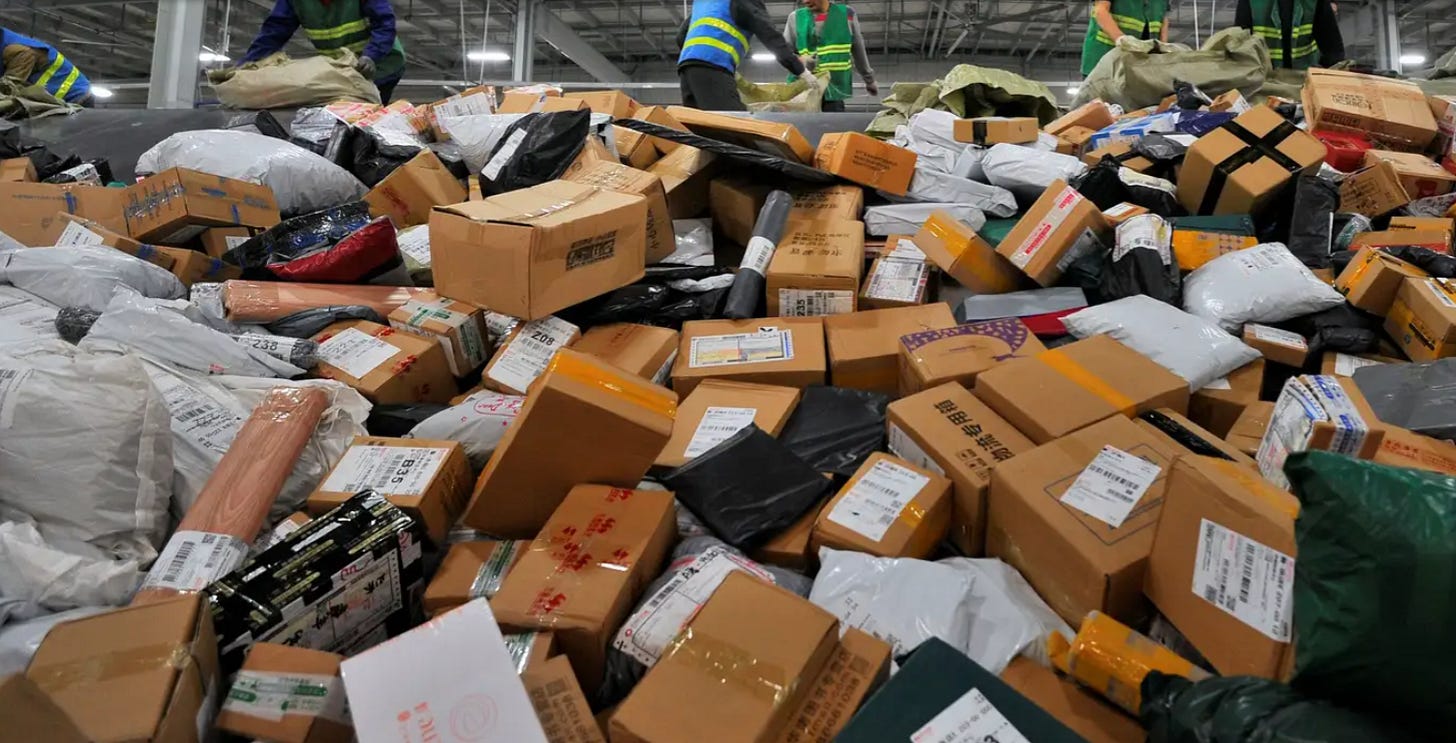If I really care about solving climate change then I think my next career move needs to be to work in utilities or in reverse logistics. There, I said it. Sexy. Aspirational. I recently read an old New Yorker article about the size of the returns industry. It’s a long article (obvi) but it’s worth it to learn about the many different tentacles that have emerged as a result of a “free returns” culture that ecommerce has built in the past 20 years.
“A forest’s worth of artificial Christmas trees goes back every January. Bags of green plastic Easter grass go back every spring. Returns of large-screen TVs surge immediately following the Super Bowl.”
Retail returns are now worth almost $800 billion or 15% of total retail sales in 2023. I have so many thoughts about this because free returns have been such a delightful part of my personal shift to online shopping. If I’m buying from a new brand, I almost always buy more than one size in jeans and shoes.
When I left Amazon, the return rate in the shoes dept was upwards of 30%. Aiyaiyai. Obviously that was a business problem. The more shoes returned (for free to the consumer), the more you’re paying in shipping the shoes to and from the customer and ultimate loss of sales if that item is not resellable (minimal returns go back into regular inventory.) And retailers have to make quick decisions about whether an item is worth handling to put it back into inventory as a sellable unit. Every second touching a returned unit is time spent away from pushing new product out the door.
I was at a conference recently where a cool Canadian company - Debrand - and Everlane co-led a returns workshop. We got to touch some of the returns that come in from customers back to Everlane’s warehouse to then be sorted and reclassified for its next destination. It demonstrated the additional labor and scalability challenges that come with sorting through mountains of returns, most of which are perfectly perfect other than a missing a hang tag, or weird creases from how the item *wasn’t* folded, or a stray thread here and there that would make that item “unsellable” at full-price. Every retailer gets to make their own rules but, the rules have largely been set by the biggest retailers and they are: 30ish days, free returns, no questions asked.

Many smaller brands are starting to implement “restocking fees” to cover reverse shipping costs but it doesn’t stop us from buying and returning a whole lot more than we need. And, let’s be honest, I’m pissed when I have to pay that restocking fee. Why can’t you offer what Amazon does? And you’re making me repack it in its ORIGINAL PACKGING? What is this? Victorian times? Ugh, what a terrible customer experience.
Back to my future career in reverse logistics.
I am not a very crafty person. By that I mean, I don’t mend stuff that breaks, I don’t see creative ways to rework something broken that makes it special and unique, and I don’t see alternate uses for things that have lived a good life but are no longer functional in its original intent. I am definitely not alone in this and to some extent blame my hyper-urban upbringing where the closest thing to camping I experienced was a night away on a compulsory Duke of Edinburgh retreat; transportation offered by coach. I just wasn’t very in touch with my stuff, where it came from or how it was made. But that’s modern life, right?
What I find very hopeful in the space of resale, repair and reuse in the returns’ economy (and just life in general) is that people are just so incredibly resourceful. There is someone out there who will find use in thousands of worn out HVAC units; someone who can find use in the dozens of used bread tags I have piled up for, I don’t know what purpose.
What I find very scary about this space is that product quality is declining and I’m not sure what percentage of consumer goods today are actually worth fixing. Case in point. My husband has a bed from Room and Board (fancy) that looks as good as it did 15 years ago when he bought it. We bought a dresser from R&B for our newborn son and it just looks cheap; drawers don’t slide well and it’s boring-looking. I can say that about pretty much every piece of clothing I own except maybe a few denim brands I know and love (shout out to AYR and Closed).
“Apparel is almost like vegetables. Things can lose value quickly.”
- Ed Mascalo, Owner of N.E.J.
I think it would be amazing to see a marketplace of all these service providers for the reverse logistics space so we can start making it infinitely easier and more affordable to fix stuff or regear things that need a new life. Maybe my next project?





